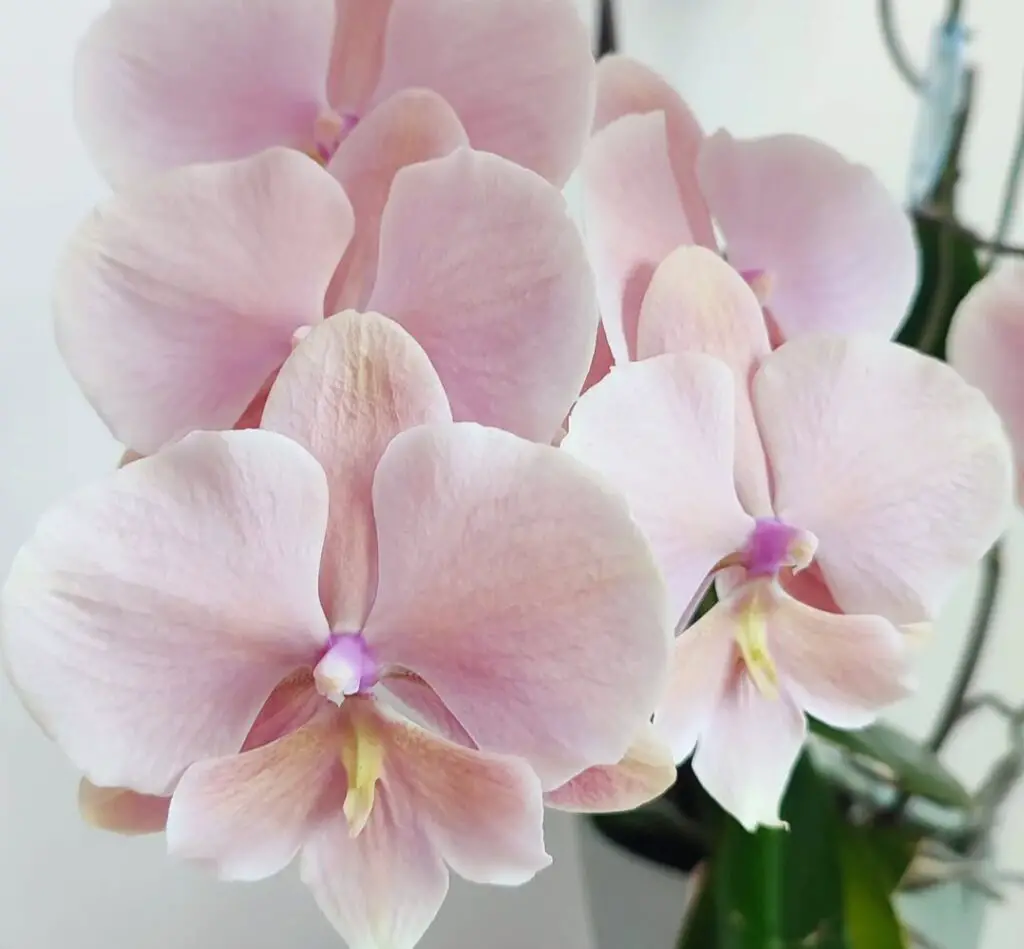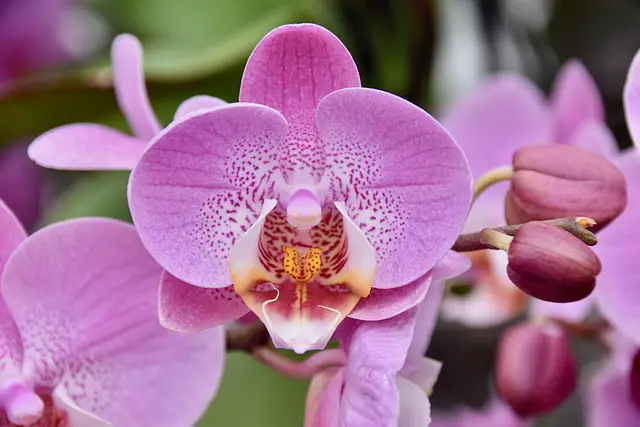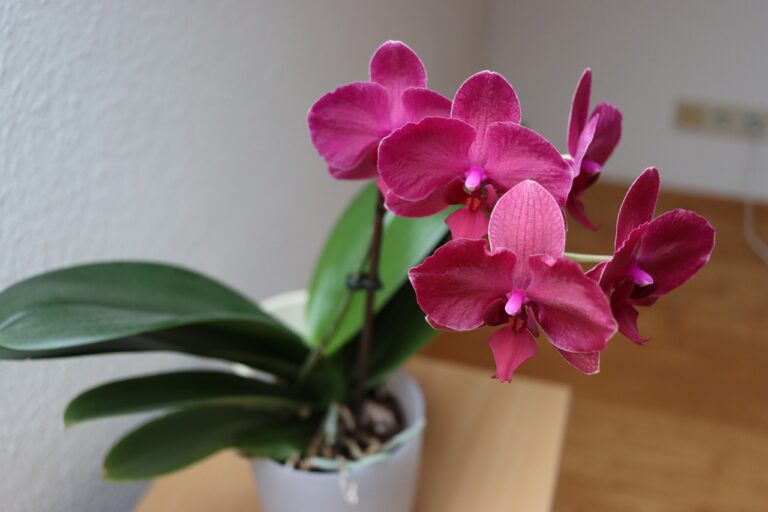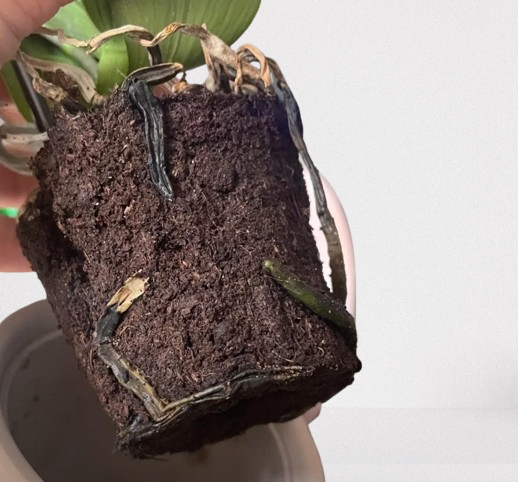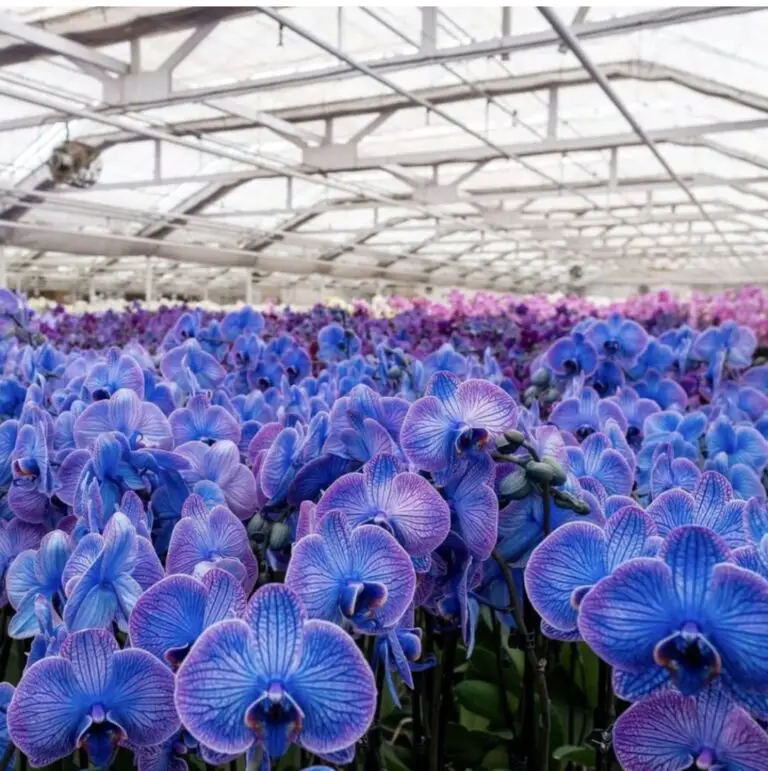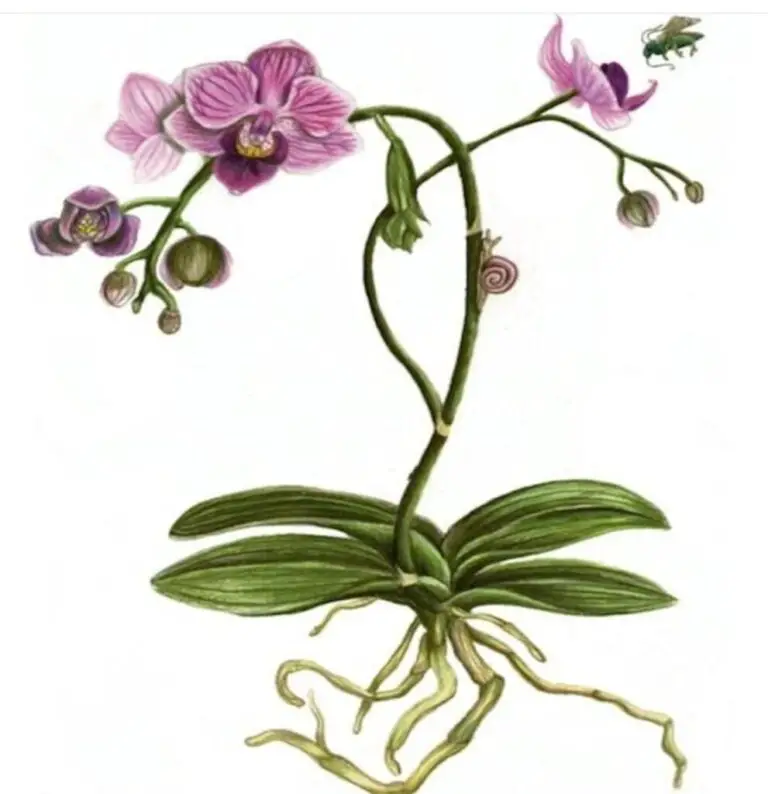Winter can be a challenging season for orchids, but with the right care, your plants can thrive even in the cold months! The key to success? Choosing the perfect spot for them and following a few essential do’s and don’ts. Whether you’re a beginner or an experienced grower, this guide will help you protect your orchids from chilly temperatures, low humidity, and reduced sunlight.
From the warmest corners of your home to simple tricks for maintaining humidity, we’ll cover everything you need to keep your orchids happy and healthy. Let’s dive into the best tips to keep your orchids in winter and the must-know care tips to ensure they bloom beautifully when spring arrives!
- 1 Orchid Care in Winter
- 2 Why Winter Is Challenging for Orchids
- 3 Dos: Best Places to Keep Orchids in Winter
- 4 1. Ideal Temperature Ranges for Orchids
- 5 2. Placement Near Windows
- 6 3. Using a Humidifier or Humidity Tray
- 7 4. Creating a Winter Orchid Care Zone
- 8 Do Nots: Typical Errors and How to Prevent Them
- 9 1. Avoid Placing Orchids Near Heat Sources
- 10 2. Don’t Overwater in Winter
- 11 3. Don’t Expose Orchids to Drafts
- 12 4. Avoid Direct Sunlight Exposure
- 13 FAQS
Orchid Care in Winter
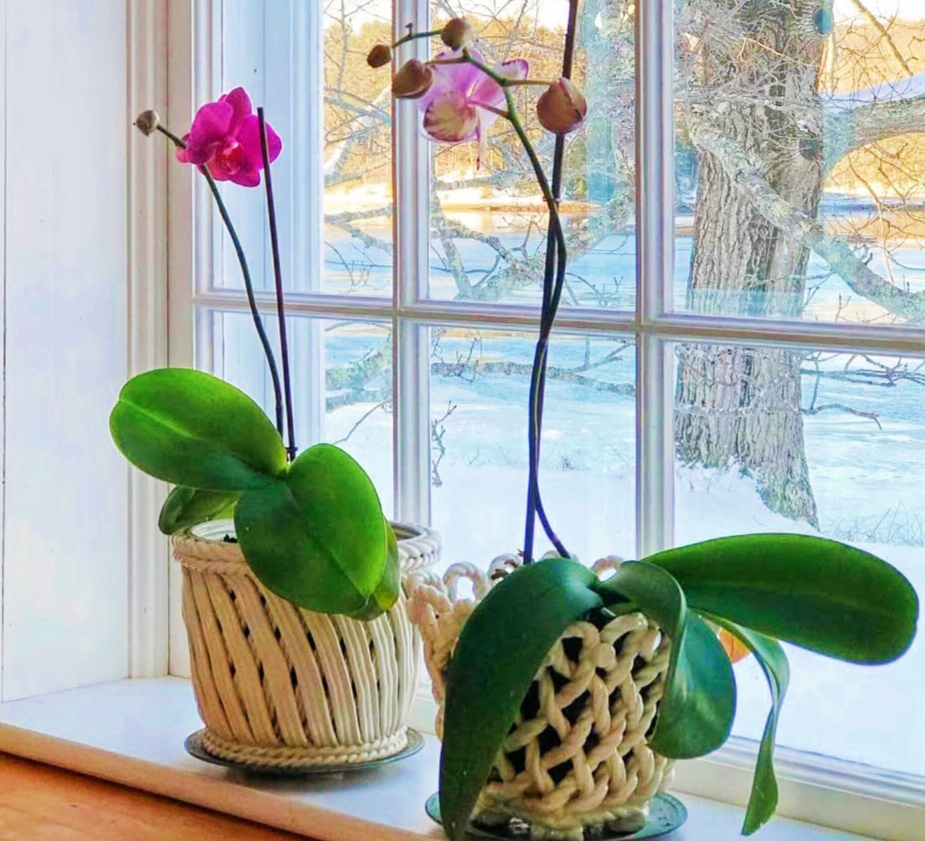
In this post, we’ll explore the best places to keep your orchids during the winter months, along with the dos and don’ts of winter orchid care, helping you protect your plants through the season.
Why Winter Is Challenging for Orchids
Winter can be tough on orchids, as the conditions they thrive in—warm temperatures, high humidity, and bright indirect sunlight—are harder to replicate during this time. Here are a few reasons why winter care is critical for orchid survival:
Low temperatures: Orchids, particularly tropical varieties, are sensitive to cold drafts and sudden temperature drops. If they’re exposed to chilly conditions, they may suffer from slowed growth or even die.
Reduced sunlight: With shorter days and less natural light, orchids may struggle to photosynthesize and produce the energy they need to grow.
Low humidity: Indoor heating systems can dry out the air, creating an environment that’s too dry for orchids to thrive. They need a certain level of humidity to grow well, which can be challenging to maintain in the winter.
Overwatering risks: Orchids’ water decrease during the winter due to slower evaporation and lower light levels. Overwatering during these months can lead to root rot or fungal diseases.
Despite these challenges, winter care doesn’t have to be complicated. With a few strategic changes to your orchid care routine, your plants can flourish even when the weather outside is frightful.
Dos: Best Places to Keep Orchids in Winter
While winter does require some extra attention, the good news is that orchids can thrive with the right placement and care. Here are the dos to ensure your orchids stay healthy during the colder months:
1. Ideal Temperature Ranges for Orchids
One of the most important factors in orchid care during winter is temperature. Orchids are tropical plants and generally prefer temperatures between 65°F to 75°F (18°C to 24°C) during the day, with a slight drop at night to 55°F to 60°F (13°C to 16°C).
Here’s how to make sure your orchids are within the optimal temperature range:
Phalaenopsis (Moth Orchids): These orchids can tolerate a bit of cooler air, but avoid temperatures below 50°F (10°C). Keep them in rooms with consistent warmth, like the living room or kitchen, but away from heaters or radiators.
Cattleya and Vanda Orchids: These orchids need slightly warmer temperatures around 70°F (21°C) during the day and can tolerate cooler temperatures at night, but not too low.
2. Placement Near Windows
Even during winter, orchids still need bright, indirect light. Place your orchids near windows, but avoid direct sunlight, especially through glass, which can burn their leaves.
South-facing windows are often ideal for orchids, as they provide plenty of light, but if you’re in a region with very cold winters, you may need to shield the plant from drafts.
East or west-facing windows work well too, as long as you can ensure the light remains indirect and not too intense.
If you don’t have the right natural light, consider using grow lights to supplement their light needs.
3. Using a Humidifier or Humidity Tray
Dry air is one of the most common problems for orchids in winter. Indoor heating systems can drastically reduce humidity levels, which can cause orchids to dry out and suffer from leaf tips turning brown.
To maintain proper humidity (around 50-60% for most orchids):
Humidifiers: Place a humidifier near your orchids, especially if you have multiple plants or a dry home. This will help maintain the moisture they need.
Humidity trays: You can also place a shallow tray filled with water and pebbles under your orchids. The plant’s surrounding humidity will rise as the water evaporates.
4. Creating a Winter Orchid Care Zone
If you don’t have a naturally warm and humid space for your orchids, consider creating a dedicated orchid care zone:
Grow lights: These are especially helpful in winter when the days are shorter. Look for full-spectrum LED grow lights, which mimic natural sunlight and can be adjusted based on your orchid’s light requirements.
Heat mats: In colder areas, heat mats can be placed under orchids to ensure the roots stay warm. Be sure not to make the area too hot—just enough to maintain the desired temperature.
Do Nots: Typical Errors and How to Prevent Them
As with all plant care, there are some common mistakes that can harm your orchids in winter. Here are the don’ts of winter orchid care:
1. Avoid Placing Orchids Near Heat Sources
While it might seem logical to keep your orchids near a heater during winter, excessive heat can cause them stress.
Radiators, space heaters, and fireplaces can dry out the air and cause temperature fluctuations that orchids can’t tolerate.
Instead, place your orchids in rooms that are naturally warmer but not too close to heat sources. Ensure they are in a stable, consistent environment.
2. Don’t Overwater in Winter
In winter, orchids are dormant or slow-growing, so they don’t need as much water as they do during their active growing season. Overwatering can lead to root rot, a common issue during the colder months.
Check the moisture level in the pot before watering—let the surface of the soil dry out slightly between waterings.
Use a well-draining orchid pot to prevent water from sitting around the roots.
If the air is too dry, increase humidity without directly watering the orchid too much.
3. Don’t Expose Orchids to Drafts
Cold drafts are detrimental to orchids, so keep them away from windows or doors that open frequently. Drafts can lead to temperature fluctuations that stress your plant, making it susceptible to disease and poor growth.
If your windows are drafty, consider using draft stoppers or moving your orchids a few feet away from the window to maintain a stable temperature.
4. Avoid Direct Sunlight Exposure
Even in winter, direct sunlight can be too intense for orchids, causing their leaves to burn. While the sun is lower in the sky during the winter, the glass from windows can intensify the light.
Always position orchids to receive indirect light, either by placing them a few feet away from windows or filtering the light with sheer curtains.
Tips for Maintaining Orchid Health During Winter
In addition to proper placement, here are a few extra tips for keeping your orchids healthy during the winter months:
Potting mix: Ensure your orchids are in a well-draining mix. Overly compacted soil can lead to root rot, especially in winter when water doesn’t evaporate as quickly.
Regular checks: Keep an eye on your orchids for any signs of distress—yellowing leaves, wilting flowers, or mushy roots can indicate overwatering or temperature stress.
Fertilizing: Orchids typically require less fertilizer in winter. Reduce feeding to once a month or stop entirely if the plant is dormant. Too much fertilizer can harm your orchids when they are not actively growing.
Pruning: Trim dead flowers or leaves to promote healthier growth, but don’t trim healthy roots or stems unless necessary.
Winter may present some challenges for orchid care, but with the right knowledge and attention, your orchids can continue to thrive through the cold months. Remember, orchids need a balance of warmth, humidity, and light to stay healthy. By following the dos and avoiding the don’ts of winter orchid care, you’ll set your plants up for success and enjoy their beauty year-round.
With the right care, your orchids can bloom brightly through the winter, bringing a touch of warmth and color to the season. Keep them cozy, well-watered, and properly lit, and they’ll reward you with their stunning flowers once again when spring comes around!
FAQS
Why is orchid care in winter different from other seasons?
Orchid care in winter requires special attention because lower temperatures and reduced sunlight can slow growth. Proper watering, humidity control, and temperature management are crucial to keep orchids healthy.
How often should I water orchids during winter?
When focusing on orchid care in winter, you should reduce watering. Most orchids need watering only once every 7–10 days. Overwatering can lead to root rot due to slower evaporation.
Do orchids need fertilizer in winter?
Yes, but in moderation. A balanced fertilizer at half strength once a month is enough for orchid care in winter. Since growth slows down, excessive feeding can harm the plant.
How can I protect orchids from cold drafts?
For proper orchid care in winter, keep your orchids away from open windows, air vents, and doors. Sudden temperature changes can cause bud blast and leaf damage.
What is the best temperature range for orchids in winter?
Orchid care in winter requires keeping temperatures between 55–75°F (13–24°C). Avoid temperatures below 50°F, as many orchids are sensitive to cold.
Should I increase humidity for orchids in winter?
Yes, humidity drops in winter due to indoor heating. A humidity level of 40–60% is ideal for proper orchid care in winter. Use a humidity tray or a humidifier to maintain the right moisture levels.
Can I keep my orchids near a heater during winter?
No, placing orchids near heaters can dry them out quickly. A key aspect of orchid care in winter is maintaining stable humidity and preventing heat stress.
Why do my orchid leaves wrinkle in winter?
Wrinkled leaves often indicate dehydration. Orchid care in winter requires adjusting watering frequency and maintaining proper humidity to prevent moisture loss.
Do orchids need sunlight during winter?
Yes, orchids still need bright, indirect light. Since daylight hours are shorter, good orchid care in winter includes placing them near a south- or east-facing window or using grow lights.
Can orchids bloom in winter?
Some orchids, like Phalaenopsis, naturally bloom in winter. Proper orchid care in winter, including the right temperature and light conditions, can encourage blooming.
Should I repot orchids in winter?
It’s best to wait until spring. Orchid care in winter focuses on stability, and repotting can stress the plant during its dormant phase.
How do I prevent fungal infections in orchids during winter?
Good airflow is crucial for orchid care in winter. Keep air circulation steady with a small fan and avoid excessive moisture buildup to prevent fungal issues.
Why are my orchid buds falling off in winter?
Bud drop is common in winter due to sudden temperature changes, low humidity, or stress. Effective orchid care in winter includes keeping conditions stable and avoiding environmental shocks.
What should I do if my orchid stops growing in winter?
It’s normal for orchids to grow slower in cold months. The best approach to orchid care in winter is maintaining consistent light, temperature, and humidity without forcing growth.
How do I prepare my orchid for winter?
Start by reducing watering, ensuring stable indoor temperatures, and adjusting light exposure. Proper orchid care in winter prevents stress and keeps the plant healthy until spring.
